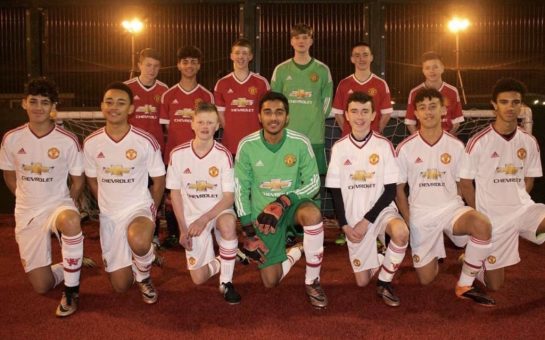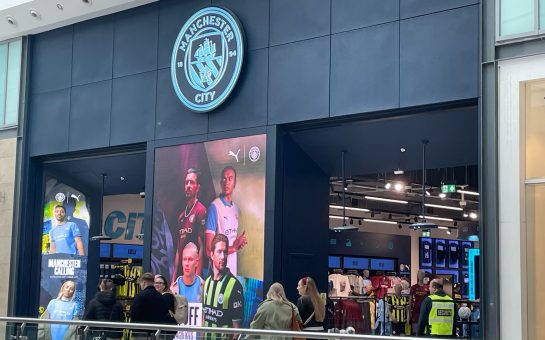A proposed ‘League Three’ Premier League B team division has been met with an overwhelmingly negative reaction from football fans across the country.
The FA Commission plan set up to improve the state of the national game suggested the creation of a new league which would feature Premier League second strings and conference sides has been met with derision.
Many argue that forming a new league between League Two and the Conference tampers with the fabric of the lower league system – a pyramid system which, unlike other European leagues, is professional from top to bottom.
While it is understandable that fans of lower league clubs will be unhappy with the idea of the league structure changing – they may have to be collateral damage for the greater good.
The FA Commission’s aims are to get British players playing more competitive football at a younger age, which does not happen under the current structure.
While it may be that these proposals are unpopular and indeed may prove unsuccessful, something has to be done to improve the state of the England national team and to increase the number of British players making up Premier League teams.
Giving Premier League clubs the chance to field their young players in a more competitive league – against older players who have to make a living out of the sport – will allow them to develop their skills at a greater intensity than they are exposed to currently.
Simply doing nothing is not an option as the state of the England team shows no sign of reversing their decline.
Earlier this season, it was revealed that English players make up a third of all Premier League minutes – a figure which is cannot compete with the likes of European heavyweights Spain and Germany.
The proposals aim to increase the number of English starters, which this season stands at 32% to 45% by 2022.
As the FA chairman outlined, this is a time for radical action and not a time to be conservative with a system which is seeing a decline in the number of top quality British players produced year on year.
Of course, there are issues with the plan.
Getting all parties to agree will be difficult, especially the Football League, who may consider that the entire foundation of their league will be destroyed by the creation of a new division.
However, with the backing of the leading Premier League clubs, including Manchester United, Manchester City and Liverpool, and the firm belief among FA members that the B league structure is a necessary measure means there is every chance that these proposals will become reality in 2016/17.
Financially, there are a number of sticking points – especially working out how financial restrictions currently imposed on Football League teams could be placed on Premier League B sides in the same division.
Despite these issues, the fundamental notion is one which must be supported to give England the chance of following other European leagues, most notably Spain, in producing an abundance of homegrown talent.
Spain and Germany are two of the top leagues that adopt a B-team structure – with the vast majority of the current world and European champions Spain, including Xavi, Andres Iniesta and Manchester United’s Juan Mata, progressing through the B team system.
If the FA can overcome the obvious drawbacks and implement a similar setup, it can only be a good thing for young England players and the future of the national team.
But the B team league should only be one measure brought in by the FA.
While the plans also include the idea of restricting the number of non-EU players in the leagues, more needs to be done to help the development of players at a younger age.
There is a significant lack of British coaches across the grassroots game and the FA need to introduce measure, such as making the coaching A-License cheaper to allow more youngsters to benefit from coaching at earlier stages of their development.
In addition to this, the mentality and the emphasis on the training of young players has to change.
Currently, there is far too much focus on making children competitive and getting them ready to be able to win earlier.
This leads to a lack of technical proficiency as players are more inclined to focus on the aspect of not being beaten, rather than trying to take risks in possession or try more things with the ball at their feet.
Players between the ages of around six to 16 need to spend more time on the training field being coached than in competition.
Once they have reached a proficient stage, they can then be unleashed into a more competitive system, which is where the B league structure comes in to play.
The style of training and matches also needs to change, with a shift needed from the insistence of 11-a-side fixtures to playing smaller games of seven or eight-a-side.
This would give players more time on the ball and the chance to build confidence, control and skill early on, which can then be applied to the 11-a-side game.
So while the FA most certainly do not have all the answers with the B-league system, it is a step forward in encouraging a more competitive system for the players at big clubs who have talent which is going to waste being farmed out on loan or playing in the reserves.
Before they reach that stage, the FA has to look in to the grassroots level and changing the culture of English football into adopting a more technical approach.
The B-league structure can work, however, with those opposing it appearing frightened of accepting change.
Will its introduction harm the Football League and upset those fans? Quite possibly. Should it matter? Definitely not.
The overall aim has to be to increase the skill levels and the numbers of English players – which is what the FA are trying to do.
So while the system may not be foolproof it has to be backed as its fundamental aims and objectives are the right ones and ones which can, in time, bring increased success to the England national side.
Image courtesy of FATV via Youtube, with thanks



